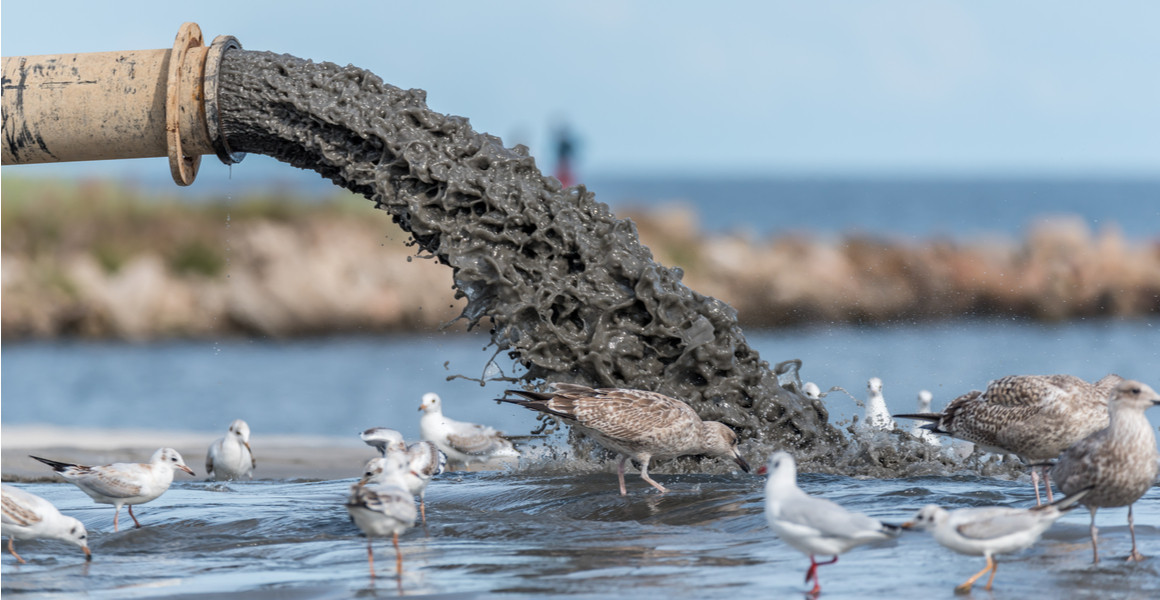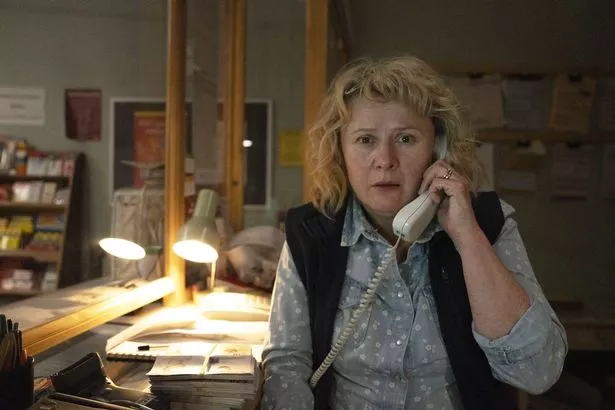
The deadly effects of sewage pollution on nature
Recent weeks have witnessed a public outcry after the House of Commons declined to force water companies to take all reasonable steps to ensure untreated sewage is not discharged into the UK’s rivers.
The Government had argued that the amendment would have cost taxpayers hundreds of billions of pounds, although it later agreed to introduce changes to the law following a high-profile campaign.
Sewage is a danger to human health, but it also has a huge impact on the animals and plants living in waterways.
For instance, algal blooms are encouraged by the presence of sewage and can lead to the deaths of many other species.
Dr Anne Jungblut, Principal Researcher in algae, fungi and plants at the Museum, says algal blooms are ‘a big problem.’
‘Blooms can lead to a change in biodiversity,’ she says, ‘and can impact the functioning and richness of an ecosystem. Algae has a huge impact on an ecosystem and big blooms can change the whole river.’

Sewage may be released into waterways if there are no chemicals available to treat it. Image © Shutterstock / Silent Corners
The politics
To prevent sewers becoming overwhelmed, water companies are allowed to release sewage into rivers in emergencies. This generally occurs in times of heavy rain to prevent the sewers backing up into buildings.
In 2020, sewage was released into the UK’s waterways on over 400,000 occasions, with wastewater overflow from utility firms lasting for over 3.1 million hours.
On average, each storm overflow the companies operate is in use for 11 days a year, rising to almost 20 for Thames Water.
These figures only encompass the events water companies have self-reported, with firms having broken the law in recent years. For instance, Southern Water was fined £90 million after admitting thousands of illegal discharges between 2010 and 2015.
While some releases may be partially treated, those from storm overflows are raw and diluted only by rainwater. As a result, these overflows can contain anything that goes down the drain, from human waste to household chemicals and plastics.
Following the impact on the UK’s supply chains from Brexit and the Coronavirus pandemic, the Government has also enabled companies to discharge sewage at any time if there are a lack of chemicals to treat it.
While the highest risk wastewater may not be released, medium and low risk substances may be discharged provided the use of chemicals is resumed ‘as soon as is practicable.’
In recent weeks, concerns over these practices have spilled into the mainstream. Beyond simply being unpleasant, the wastewater can cause serious damage to fragile river ecosystems.

Algal blooms form as a result of an abundance of nutrients. Image © Shutterstock / Kit Leong
Algal blooms
Releasing sewage into rivers introduces a large amount of nutrients into the water. This process, known as eutrophication, can have serious consequences.
Anne explains, ‘When sewage is released into rivers, it contains a lot of nitrogen and phosphorous. These can stimulate the growth of algae, such as phytoplankton in the water or mats known as biofilms in the sediments, which can lead to algal blooms.
‘A large amount of algae has an impact on the rest of the ecosystem, such as blocking out the light that plants need for photosynthesis. When these plants, and the algae itself, start to die, they are eaten by a lot of bacteria which reduces oxygen in the water, killing fish and other organisms.’
One of the groups which is most badly affected by a lack of oxygen are freshwater insects, many of which spend large periods of their development in rivers.
Steve Brooks, who researches insects at the Museum, says, ‘Insects are like a canary in a coal mine, providing an early warning system that something isn’t right.
‘Most aquatic invertebrates in a river depend on high oxygen levels because most don’t have the option to swim to the surface as they’ll be swept away. When this oxygen disappears because of sewage, then the species disappear too.
‘The most affected insects are stoneflies and mayflies as they don’t survive well without high oxygen. In turn, this can have a knock-on impact on fish. While fish can swim away from an area of sewage contamination, they can’t escape if their prey has disappeared.’

Blue green algae produces a range of toxins that can prove fatal to wildlife. Image © Shutterstock / Stefan-Kadar
Boom town
While algal blooms may harm some species, they provide a boon for others to grow at their expense.
For instance, insects like midges have haemoglobin, the oxygen-carrying compound found in red blood cells. This allows them to tolerate low oxygen conditions, leading to an explosion in their populations. The same is also true of some algal groups, which are more prone to bloom than others.
‘Eutrophication will lead to a shift of the composition of the algae,’ Anne says. ‘Some diatom species do really well and form blooms as they are particularly good at taking up lots of nutrients and growing really fast. This can then lead to a reduction of the river’s overall biodiversity.’
The conditions of the river affect which groups prosper. Slower moving rivers, or those which have become blocked, can promote the growth of toxic algae which prefer these conditions.
‘Stagnant water can lead to the formation of blue green cyanobacteria blooms,’ Anne says. ‘As well as contributing to eutrophication, they also produce toxins that are toxic not only to fish, but also to any humans or dogs that drink the water.
‘While I haven’t seen any records that have specifically been linked to a sewage release in the UK, releasing large amounts of nutrients into stagnant waterways raises the probability of these kinds of blooms occurring.’
These toxic organisms come in addition to compounds already in treated wastewater, which can include heavy metals, microplastics and chemicals such as pesticides.
Some of these chemicals have been found to cause physiological changes in fish. Treated wastewater can cause male brown roaches to develop ovarian cavities, as well as induce changes in the kidneys and immune system.
Fish may also be drawn towards wastewater, especially in winter, as wastewater outflows can increase the temperature of the water by up to 9⁰C. However, contaminants are also at their highest at this time, with researchers describing these outflows as an ‘ecological trap’.

Mayflies were wiped out in the River Way in 2014. Image © Ian Capper, licensed under CC BY-SA 2.0 via Geograph.
Restoring rivers
Once sewage has been released into a river, there is little that can be done to prevent its impact. However, the ecosystems can recover if they are not overwhelmed.
‘The possibility of recovery depends on the nature of the spillage,’ says Steve. ‘An acute spill comes and goes, so while it might remove a lot of insects from the river, the recovery can be quicker. For instance, many freshwater insects tend to fly up the river as adults to lay their eggs, which are then washed back down. This allows recolonisation of the river to take place.
‘However, chronic pollution causes real problems as there is no possibility for recovery. In 2014, the River Wey in Surrey was polluted and the mayflies were wiped out.
‘There wasn’t a natural recovery, as there was no opportunity to come back from the pollution.’
While the responsibility of treating sewage lies with utility companies, everyone can play their part in improving water quality. The River Wey was restored thanks to a project led by Dr Cyril Bennett, who reintroduced mayflies by moving juveniles from other rivers.
He is also involved in the Riverfly Partnership, a group which monitors the water quality of rivers to protect the habitat of a range of flies.
Steve, who is helps to co-ordinate the partnership, says, ‘We train volunteers to monitor biodiversity at a range of sites by taking a standardised sample from a river and giving scores to different groups of insects.
‘If the score falls below a certain trigger level then there is an issue so the Environment Agency gets contacted to look into it. Over the years, volunteers have detected dozens of incidents than can then be pinpointed to a specific site.’
Anyone spotting rivers containing algal blooms should keep themselves away from the water, and report it to the Environment Agency directly or through apps such as Bloomin’ Algae. Though the bloom may not be toxic, it is always safest to assume it is.







































